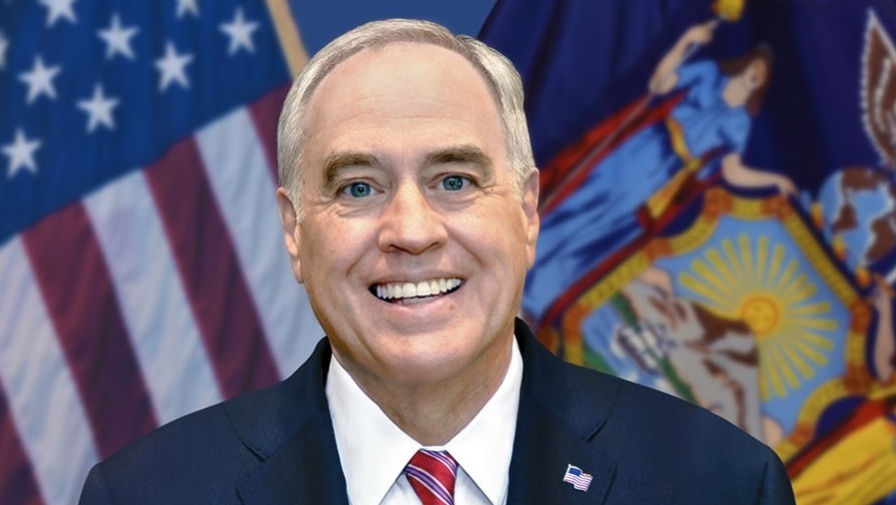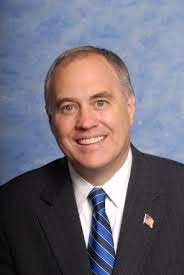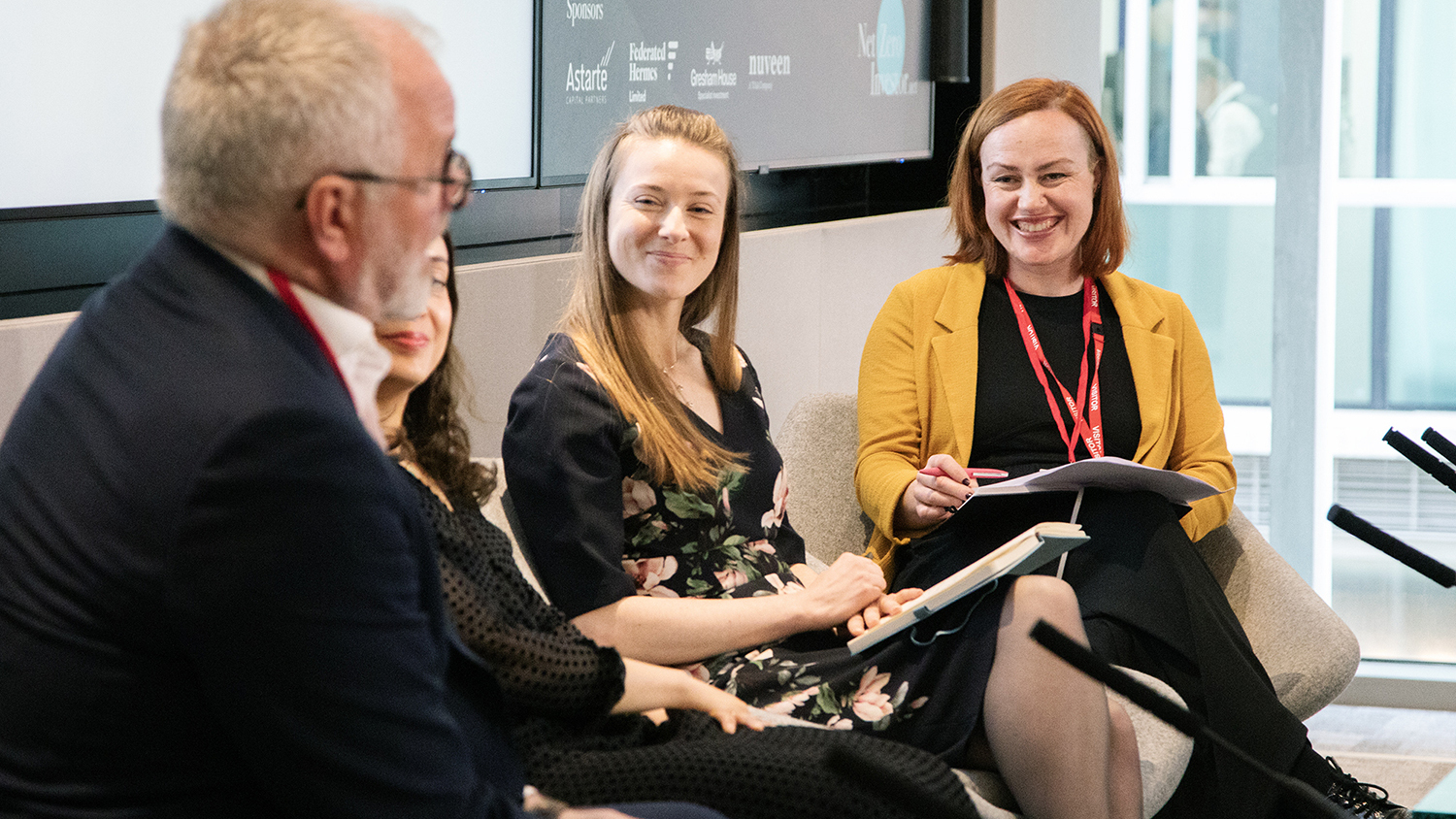
Exclusive - New York State Comptroller Thomas DiNapoli: ‘we cannot divest our way to net zero’
Thomas DiNapoli has been New York State Comptroller for more than 15 years, as the man in charge of a $258bn investment portfolio opens up to NZI about the pension fund's net zero investment strategy
As the global climate finance community flocks to Japan, where the annual PRI in Person conference is kicking off tomorrow, investors and other stakeholders from around the world are expected to exchange net zero views and scrutinise green investment strategies in Tokyo this week.
All eyes are firmly on the world's largest pension funds, as they are seen as the key drivers in the sustainability debate.
One of the leading voices in that respect is the well-known industry veteran and political insider Thomas DiNapoli, and for good reason.
DiNapoli is in charge of the $258 billion New York State Common Retirement Fund, the third-largest pension player in the world's largest investment market. It explains why, in the Big Apple, the life-long Long Islander is often referred to as 'the decider-in-chief'.
First elected in February 2007, DiNapoli has been New York State Comptroller for more than 15 years, and during that time the Democrat party member has seen the net zero debate evolve and mature, as the born and bred New Yorker tells Net Zero Investor in an exclusive interview.
Balancing short-term return objectives versus long-term sustainability targets and green investment strategies, it seems to be a struggle for practically every pension fund out there, with many investors prioritising returns, therefore lining themselves up for criticism for having a net zero strategy in name only. Would you say your approach is different?
As trustee of the New York State Common Retirement Fund, I have a fiduciary duty to the more than one million members, retirees and beneficiaries of the New York State and Local Retirement System, who receive more than one billion dollars in benefits each month. We have to balance short-term obligations and annual return objectives with our focus on the fund’s long-term value and the impacts that climate change can have on our portfolio. The fund’s net zero commitments reflects our deep concerns about the systemic risks posed by climate change.
Please tell us a bit about those commitments.
The fund’s overall climate strategy, laid out in our Climate Action Plan, is a multi-faceted approach that addresses the risks associated with climate change and capitalizes on the opportunities created by the transition to a low-carbon economy. As a long-term, universal investor, it is clear that the fund cannot achieve its net zero goals unless the real economy does as well. That is why our comprehensive strategy includes using all the different tools available to a public pension fund: engagement with our portfolio companies and managers, proxy voting, public policy advocacy, and investments in climate solutions.
"Our sustainable investments are indistinguishable from our broader investments in underwriting and performance expectations."

Engagement, proxy voting, lobbying and advocacy, with the transition to net zero ultimately being a collective effort, as you stressed, so how do you see the role of asset owners in influencing the climate finance agenda?
Asset owners’ roles can differ depending on their circumstances. As a public pension fund, our particular duties and obligations help shape our strategies, including our approach to addressing climate risks and investing in climate solutions. We recognize that climate change poses systemic risks across asset classes, which is why we emphasize a comprehensive approach to achieving our net zero objectives that employs all the tools in our toolkit.
Speaking of investments, renewables is the number one buzzword in the climate finance space at the moment, seen as the most logical pro-net zero investment spot. Many investors, however, cite risks and obstacles, such as mounting costs and high inflation. What do you think?
A key component of the fund’s Climate Action Plan is the creation of a formal Sustainable Investments and Climate Solutions (SICS) program, and a commitment of $20 billion to that program, a goal that we have recently achieved ahead of schedule. Our sustainable investments, including our investments in renewables, are subject to the same fiduciary and risk and return requirements applicable to other investments in any given asset class.
"A key component of the fund’s Climate action is a commitment of $20 billion to that program, a goal that we have recently achieved ahead of schedule."
As such, our sustainable investments are indistinguishable from our broader investments in underwriting and performance expectations. We have committed significant capital to managers that make renewable and clean energy investments as well as to investments that capitalize on investment opportunities in waste and pollution, energy efficiency, and other climate-related goals, and expect the opportunities to invest in those themes to continue to grow as the energy transition accelerates.
Let's dive a bit deeper into your investments. How do you actually 'green' your investment portfolio? What do you look out for?
Roughly 75% of the investments in our Sustainable Investments and Climate Solutions’ portfolio have a climate orientation and include green loans and bonds. We also have significant exposure to sustainable infrastructure, which includes investments in various renewable energies, such as wind, solar and hydroelectric power generation. Each of our sustainable investments advances one or more sustainability themes, which is a criterion for inclusion.
Some pension funds, like the Church of England Pension Board in the UK, are abandoning oil and gas investments altogether. Where do you stand, what is realistic, in your view?
Divestment is a last resort, only used by the fund to address specific and serious risks that can’t be addressed otherwise. Though we have made some divestments in the energy sector, a fund of our size and diversity cannot divest our way to net zero. In addition, if we achieve net zero greenhouse gas emissions for the fund, but the real economy does not, many of the fund’s investments would continue to face climate risks.
We will only achieve our net zero goal if the real economy moves to net zero. That requires companies to commit to emissions reductions and public policies that drive change. This is, again, why our strategy is multi-faceted and addresses climate risk by prioritizing engagement with the biggest emitters, investments in climate solutions and advocating for strong public policies at the international, federal and state levels.
"The fund’s net zero commitments reflects our deep concerns about the systemic risks posed by climate change."
Earlier we briefly touched on engagement efforts, your fund seems to take a fairly active stewardship approach. Not many climate-related motions were successful this proxy season, however. How does your fund go about this?
Engagement is a key component of the fund’s Climate Action Plan to address climate risks and opportunities. We engage directly with companies in high-impact sectors, and also in collaboration with other investors through initiatives such as Climate Action 100+. Since 2008, we have filed over 160 climate-change-related shareholder resolutions, reaching more than 85 agreements with portfolio companies to set net zero GHG emissions targets, commit to renewable energy and energy efficiency goals, and increase their climate disclosures in line with the Task Force on Climate-Related Financial Disclosures.
While some have pointed out lower vote support for climate proposals in 2023, it is important to note that far more proposals were withdrawn with companies agreeing to implement them than actually went to a vote in 2023. Our fund reached agreements with four of the five companies where we filed proposals to evaluate and set targets to reduce their greenhouse gas emissions. Engagement alone is not the answer, but it is an important component of our multi-faceted approach to addressing climate-related investment risks.
Thank you. Finally, anything else you'd like to share with our readers?
Climate change poses risks to the economy, financial markets, and the fund’s investments. Managing these risks is integral to protecting the fund’s investments, and capitalizing on the opportunities that arise from the transition to a net zero economy is similarly critical to ensuring that the fund is best-positioned for market changes stemming from the transition. The fund has set bold targets and has made progress in achieving them. As we continue to work toward net zero, and address both specific and systemic climate risks to our portfolio, the fund will keep focusing on long-term climate resilience in line with our fiduciary duty.
Also read
CPPIB’s green investment chief: ‘decarbonising a portfolio at scale is almost impossible’




